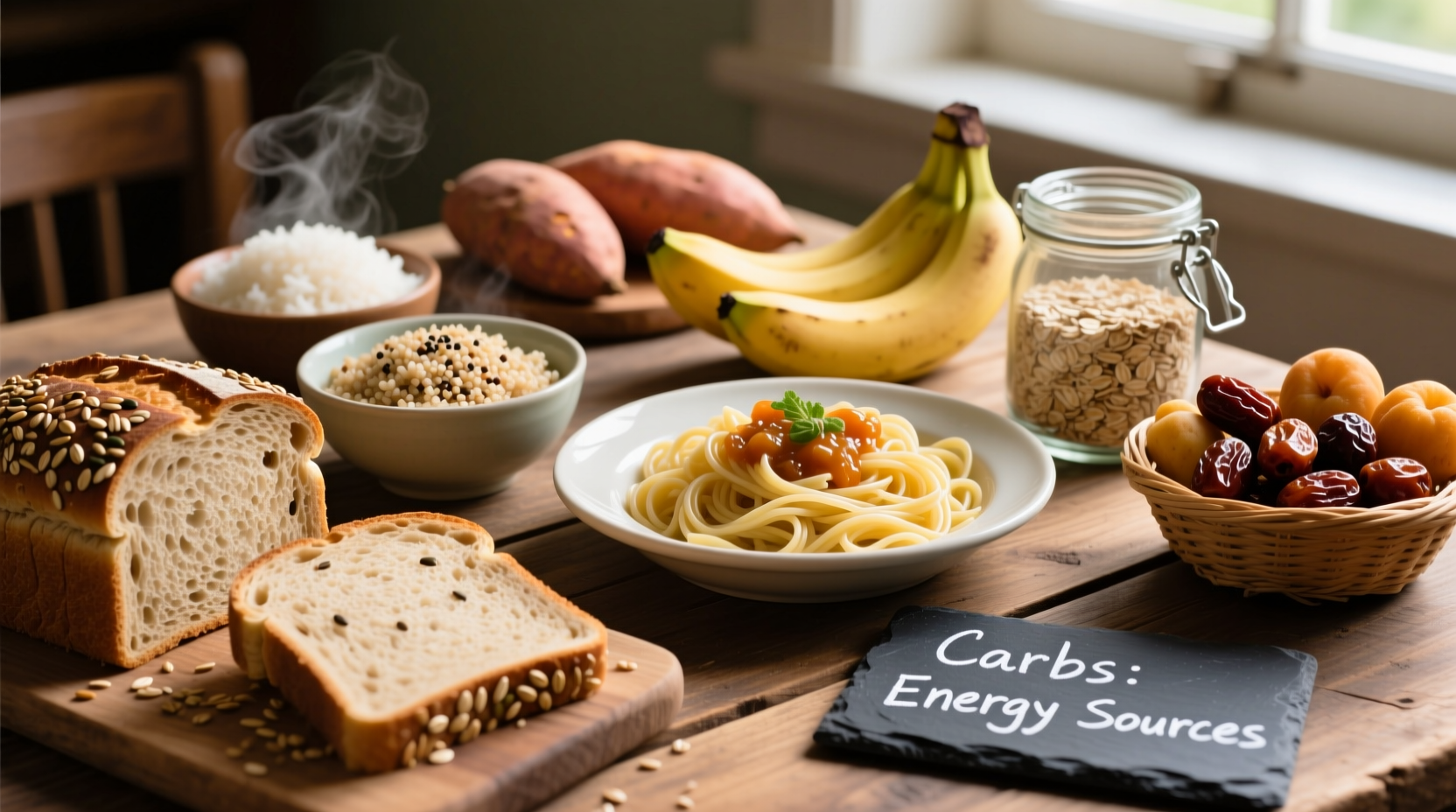Understanding Carbohydrates: Your Body's Primary Energy Source
Carbohydrates fuel your brain and muscles, making them essential for daily function. Unlike popular misconceptions, not all carbs are created equal. Nutrition science confirms that complex carbohydrates from whole foods deliver sustained energy while supporting digestive health through dietary fiber. The key difference lies in processing: whole foods retain natural fiber and nutrients, while refined carbs like white bread and sugary snacks cause blood sugar spikes.
Everyday Foods Containing Carbohydrates (With Serving Sizes)
Carbs appear in diverse food groups. This evidence-based table shows common sources with typical carbohydrate content per standard serving, sourced from USDA FoodData Central:
| Food Category | Example Foods | Carbs Per Serving | Fiber Content |
|---|---|---|---|
| Whole Grains | Oats, quinoa, brown rice | 27g (1/2 cup cooked) | 4g |
| Fruits | Apples, bananas, berries | 15g (1 medium fruit) | 3g |
| Non-Starchy Vegetables | Broccoli, spinach, peppers | 5g (1 cup raw) | 2g |
| Legumes | Black beans, lentils, chickpeas | 20g (1/2 cup cooked) | 7g |
| Dairy | Milk, yogurt | 12g (1 cup) | 0g |
Notice how CDC nutrition data shows legumes and whole grains provide significantly more fiber than dairy or refined grains. This fiber difference impacts how your body processes these carbohydrates.
Choosing Smart Carb Sources for Balanced Nutrition
When selecting carbohydrate foods, prioritize these evidence-backed principles:
- Focus on whole foods: Choose brown rice over white rice, whole wheat bread over enriched flour products
- Read labels carefully: Look for "whole grain" as first ingredient and at least 3g fiber per serving
- Balance with protein: Pair apple slices with almond butter to stabilize blood sugar
- Watch portion sizes: Use your palm as a guide for cooked grain servings

Special Dietary Considerations for Carbohydrate Intake
Your ideal carb intake depends on individual factors—a crucial context often overlooked. Harvard T.H. Chan School of Public Health research shows:
- Active individuals benefit from 45-65% of calories from carbs for sustained energy
- People managing diabetes should focus on low-glycemic options like lentils and non-starchy vegetables
- Those following therapeutic diets (like keto) temporarily restrict carbs but require medical supervision
These scenario-specific boundaries prevent one-size-fits-all recommendations that could undermine dietary goals.
Practical Meal Integration Strategies
Transform your carb choices with these actionable steps:
- Swap white pasta for chickpea or lentil-based alternatives (15g more fiber per serving)
- Add berries to morning oatmeal instead of sugar
- Choose sweet potatoes over regular potatoes for double the fiber
- Include beans in salads for protein-carb synergy
These simple substitutions, validated by USDA FoodData Central, maintain flavor while boosting nutritional value. Remember that carbohydrate timing matters less than overall daily quality for most people—focus on consistent whole food choices rather than strict meal timing.











 浙公网安备
33010002000092号
浙公网安备
33010002000092号 浙B2-20120091-4
浙B2-20120091-4